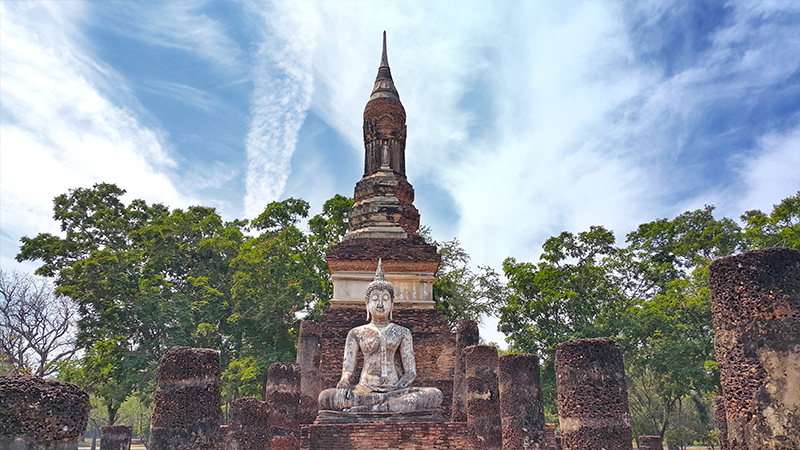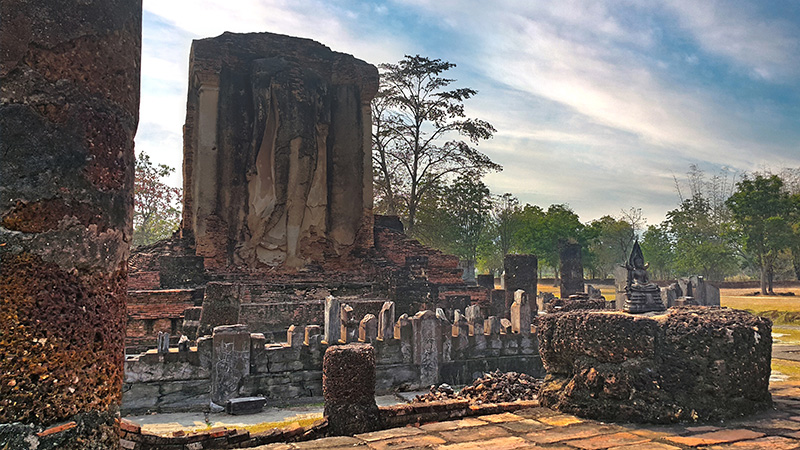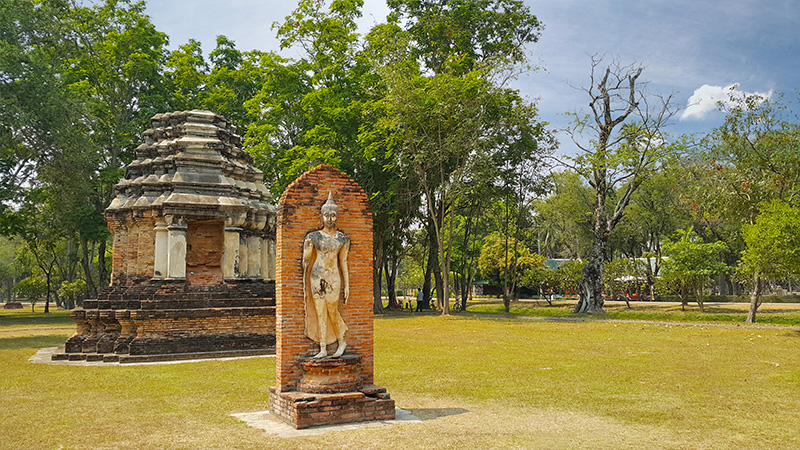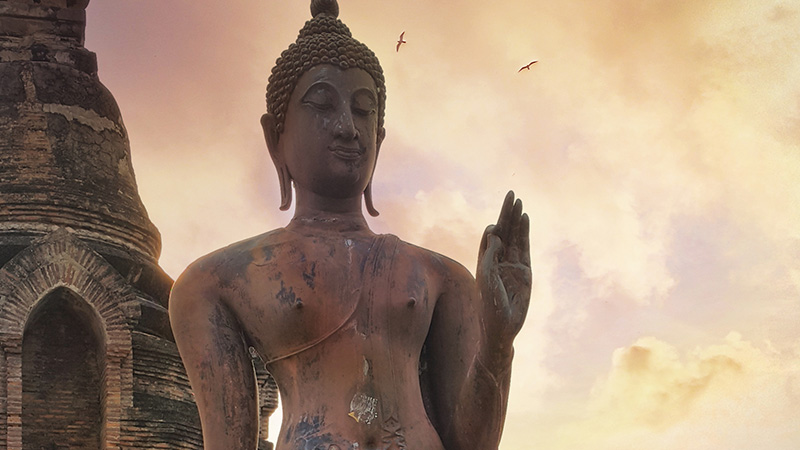Religion and Art
Kingdom of fine arts ... Kingdom of Sukhothai
Artworks are often created to meet spiritual needs, in particular, the expression of religious power. Therefore, religion and artworks promote each other and they cannot be separated from each other as well.
People in the Sukhothai period depended on a belief system based on Buddhism and Brahminical - Hindu religion and also preserved the identity of the "spirits," which referred to pure spirits, such as the ancestral spirits. This was the traditional belief of the locals. The three doctrines were merged to become the true way of life of Sukhothai.

เจดีย์ทรงพุ่มข้าวบิณฑ์หรือทรงดอกบัวตูม ณ วัดตระพังเงิน 
พระพุทธรูปปางลีลา ณ วัดเชตุพน 
พระพุทธรูปปางลีลา ณ วัดตระพังเงิน 
พระพุทธรูปปางลีลา ณ สระศรี
All artworks created in this era were intended to express such beliefs, including architecture, sculptures, literature, paintings, as well as fine arts. There were only a few of them that were created for other reasons— politics and economics— such as celadon produced for commercial purposes.
Observation and the ability of adaptation of the people resulted in the style of the art which became uniqueness reflecting the identity of "Sukhothai Kingdom" clearly. Historically, it has been found that the Sukhothai kingdom always interacted and connected with other lands, from before the establishment of the city until the degenerate era. Sukhothai craftsmen brought the characteristics of the artwork of other lands such as Khmer, Lanna, Pagan, Uthong, and Lang Ka, to blend and improve their taste to become "Sukhothai art", which was famous for its outstanding beauty, and then these fine arts were passed to other contemporary regions and those growing in the later period.
Sukhothai art is unique, delicate, and peaceful. This reflected the viewpoints of people living in ecstatic times in a managed and well-organized environment that could greatly benefit their lives. At the same time, the influence of other craftsmanship blended perfectly in Sukhothai work showed the open mind and smartness to adapt to situations.
Therefore, the artworks helped us to understand the political, economic, and social context of the period more clearly, such as the discovery of a pagoda with a shape of the funnel —like float filled with rice used as offerings— or a budding lotus, including the images of Buddha in the city which showed the power of Sukhothai while finding the vestiges of Sukhothai fine art in other arts showed the relationship between the two regions as well.
The cultural heritage of Sukhothai obviously transmitted to the present showed the identity of the Sukhothai people and Thais from the past to the present obviously. It was "Phra Ruang heritage" that should be proud of them.

















